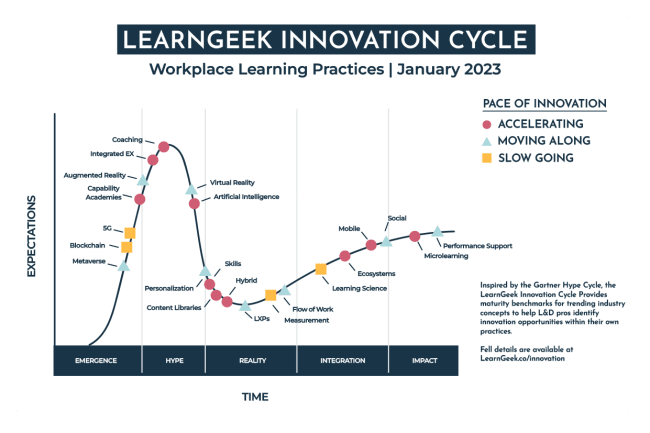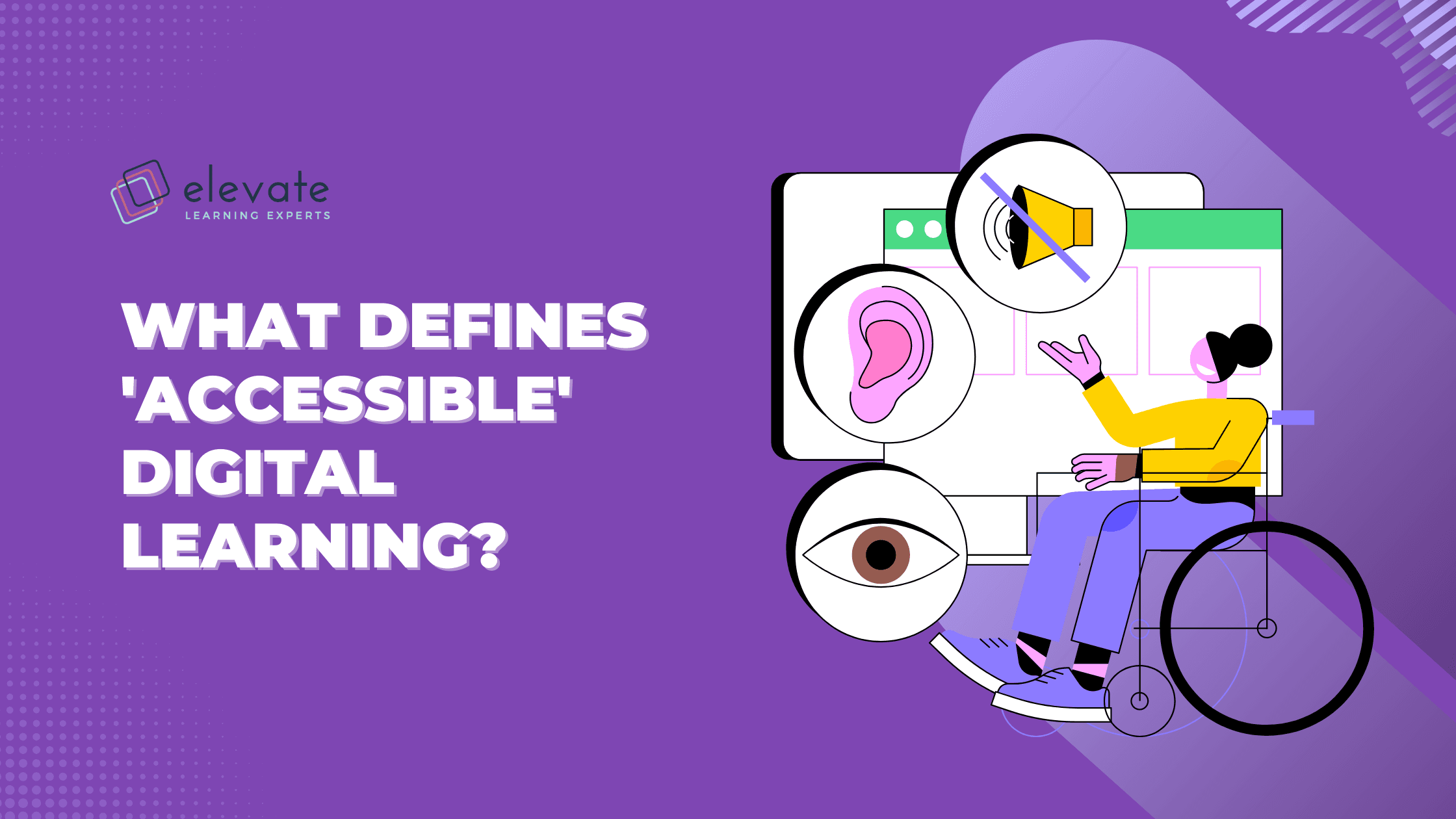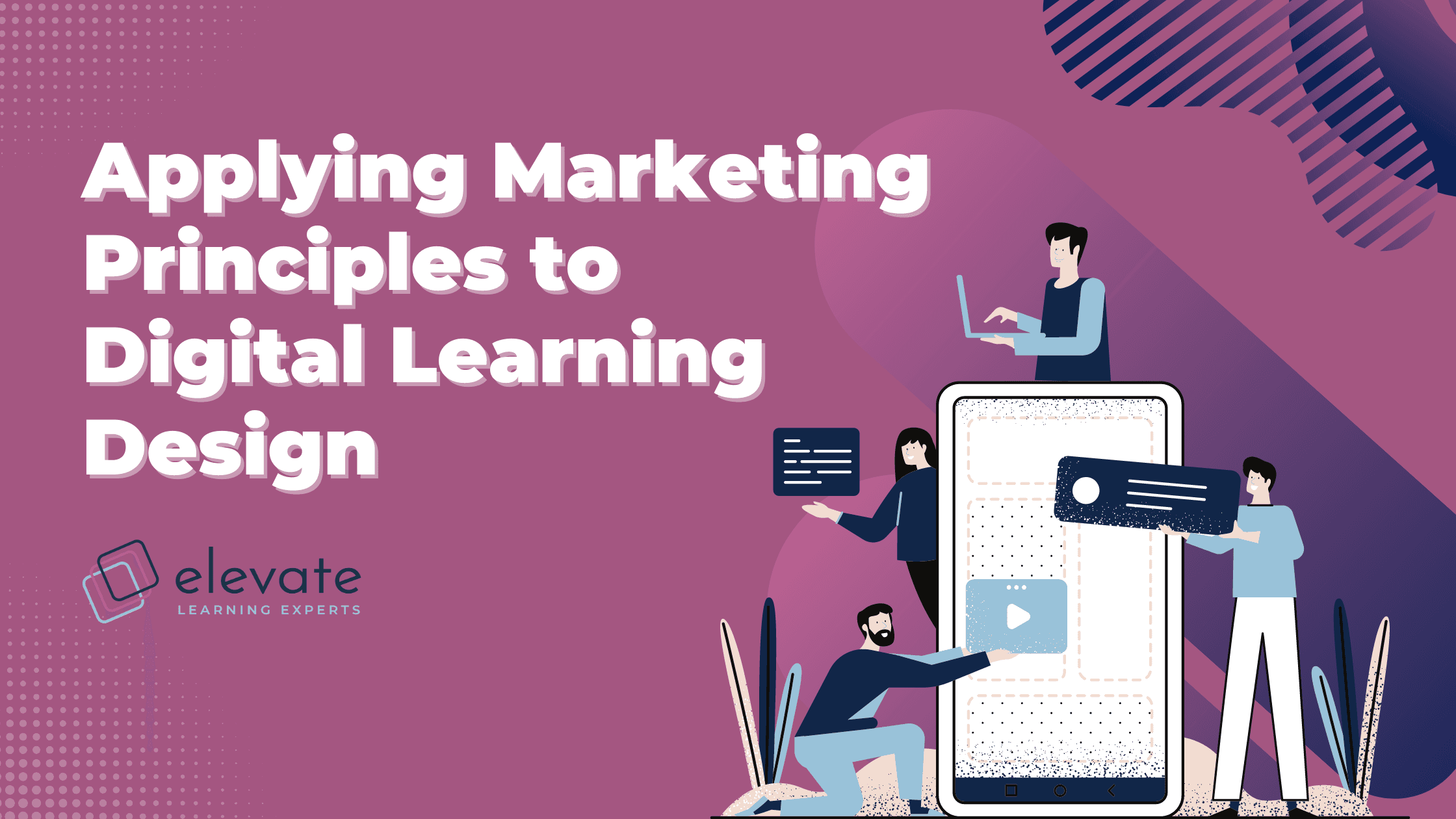“AI is the ultimate democratiser, providing access to information, education, and economic opportunity on an unprecedented scale.” — Satya Nadella, CEO of Microsoft
If you’ve logged onto LinkedIn recently, there’s no doubt that your feed has been flooded with posts and musings related to Artificial Intelligence (AI). And while it’s not a new phenomenon, artificial intelligence models like ChatGPT have been flooding the social media airwaves, raising some interesting questions about how we acquire, process and share information.
The future of learning design (and education as a whole) is shaped by changes and advancements in digital technology. As learning design specialists, we’re encouraged to stay on top of current trends related to learning, and the impact that certain advancements could have on the way we design learning for the future. But, what if these trends and upcoming advancements posed a threat to not only how we design learning, but to our roles within learning design?

The Changing Role of Learning Designers

As experts in learning and development, we play a crucial role in guiding learners on their journey of knowledge acquisition and competency development. But the way we approach this task is evolving. Gone are the days of rigidly scheduled classroom sessions or solely relying on information shared via a company-wide learning management system. In today’s information age and knowledge economy, learners expect to access knowledge on their terms and at their own pace.
As learning designers, our goal should be to tap into the innate curiosity and drive for self-knowledge that our learners mimic behaviourally when they use other digital platforms. By designing experiences that foster a state of flow, we can truly engage learners and inspire them to take ownership of their learning. And by embracing technology (and its innovations), we can elevate our designs and become true facilitators of a holistic and fulfilling learning experience.
But this means adopting a strategic approach to learning and development, rather than a purely operational one. In the past, we’ve been overly reactive, rather than pre-emptive of our teams’ learning needs, and overly rigid in prescribing specific learning content in response to those needs. This shift in skillset comes with a required shift in mindset, and more specifically, being open to technological advancements, rather than fearful of them.
As learning designers, we need to be at the forefront of technological advances. This is to grow our love for learning, sympathise with our learners, and so that we can use these as tools to develop faster and more relevant learning experiences for our learners. At Elevate, we believe that technology is a powerful tool for creating personalised and impactful learning experiences. However, too often we (as an industry) rely on technology alone to shape our learning strategy (or try to ignore them altogether in the fear that they’ll ‘take over our jobs’). Instead, technology should be utilised as an enabler, allowing us to integrate and enhance our approach to learning.
So, What Does AI Mean for the Future of Learning?
And, why should you care? If this is all hype, surely the conversation will eventually fizzle out?
According to JD Dillon, founder of LearnGeek, it’s time to pay attention to AI. His research shows that it’s no longer just hype — it’s becoming a reality. Instead of resisting it, we should explore how we can leverage AI to our advantage and stay ahead of the curve.

Let’s take a look at how AI might impact learning.

Following from our previous article on accessibility in learning, a key aim of learning designers should be to create equitable learning experiences that are accessible to all learners regardless of ability or disability. That being said, designing learning experiences are much more complex and requires more consideration. Thankfully, advances in AI technology have also placed accessibility at the forefront of learning design, essentially simplifying the creation of accessible learning experiences.
Here’s a list of a few of those tools:
- Text-to-speech and speech-to-text software: These tools can help learners who have difficulty reading or writing to access the content of online courses. Existing AI tools include: Descript’s Overdub, Murf.ai, and Google Cloud.
- Closed captioning and subtitles: These tools allow learners who are deaf or hard of hearing to understand the audio content of online courses. Existing AI tools include: AssemblyAI and Verbit.ai.
- Screen readers: These tools can help learners who are visually impaired to navigate and interact with online course materials. Existing AI tools include: accessiBe, NVDA, Speechify, and Apple Voiceover.
- Adaptive learning platforms: These tools use AI to personalise the learning experience for each individual learner, by adjusting the pace, difficulty and content of the course based on their performance. Existing AI tools include: EdApp, Adaptemy, and Smart Sparrow.
- Virtual Reality and Augmented Reality: These technologies can make online learning more engaging and interactive, allowing learners to immerse themselves in real-world simulations and scenarios. Existing AI tools include: Synthesia, SkyView, and Microsoft HoloLens.
- Automatic translation: These tools can help learners who speak different languages to access online course content in their preferred language. Existing AI tools include: Google Translate, DeepL, and Smartling.
- AI-powered personal tutors: These tools can provide one-on-one support and guidance to learners, providing personalised feedback and coaching based on their performance. Existing AI tools include: Entelechy and Google Cloud.

Utilising AI can be a valuable time-saving tool in the content development stage of a project, but it’s important to remember that as learning designers, it’s our responsibility to ensure that the material meets specific learnability standards, and most importantly, the needs of our learners.
As learning designers, we’re responsible for the development of all learning material, and this includes written content. The power of AI tools like ChatGPT is that they remove the need to spend time tirelessly researching and writing. AI technology greatly accelerates the content development process, allowing you to focus on reviewing or curating content, strategically marketing your learning experiences or measuring the impact of your learning interventions.
Here is a list of AI tools to consider when developing content:
- Content generation software: These AI tools can help learning designers to quickly and easily generate new learning content, such as quizzes, flashcards, and interactive scenarios. Existing AI tools include: CopyAI, Copysmith, and Lex.page.
- Adaptive content creation: These tools use AI to automatically generate different versions of the same content, tailored to the unique needs and preferences of different learners. Existing AI tools include: Articulate, Quill, and KAI.
- Automatic summarisation: These tools can quickly extract the main points from a piece of text, making it easier for learning designers to identify key takeaways and create summaries for learners. Existing AI tools include: AutoSummarizer and SummarizeThis.
- Natural Language Processing (NLP): These tools can help learning designers to automatically analyse and understand the meaning and sentiment of text, making it easier to create personalised learning experiences. Genism is an existing AI tool.
- AI-powered content curation: These tools can help learning designers to identify and select relevant and high-quality content from a wide range of sources, saving time and effort in the content creation process. Existing AI tools include: Scoop.it and Paper.li.
- Video and audio editing tools: These AI tools can help learning designers to quickly and easily edit video and audio content, such as by transcribing speech, adding captions, and generating subtitles. Existing AI tools include: Adobe Premiere Rush, Adobe Captivate, Articulate Storyline, and Audacity.
- Interactive content creation: These tools can help learning designers to create interactive learning experiences, such as virtual reality simulations, gamified learning, and adaptive quizzes. Existing AI tools include: Adobe XD, H5P, Articulate Rise, and Quizlet.

A well-designed learning experience is characterised by its personalisation to the individual learner. To achieve this, it is essential for learning designers to continually evaluate and incorporate learner data into their designs. This iterative process allows for more effective and efficient delivery of instruction, ultimately leading to enhanced learning outcomes.
So, how does AI help revolutionise the tedious process of synthesising and analysing copious amounts of learner data? For many learning experts, this list should be familiar, but perhaps their tracking and data analytics capabilities were never fully explored in light of the recent popularity of the likes of ChatGPT.
Here is a list of AI tools to consider when conducting monitoring and review processes:
- Learning Management System (LMS): These systems track learner progress and engagement, allowing learning designers to evaluate the effectiveness of course content and delivery. Existing AI tools include: Blackboard Learn, Smart Sparrow, and EdX.
- Learning Analytics Platforms: These tools use data mining, machine learning, and visualisation techniques to analyse learner data and provide insights into learner behaviour and performance. Existing AI tools include: Learnosity, BrightBytes, and LearnDash.
- Adaptive Learning Systems: These systems use data on learner performance to adjust course content and delivery in real-time, helps to improve learner engagement and outcomes. Existing AI tools include: Knewton, ALEKS, and Dreambox.
- Predictive Analytics: These tools use data on student performance and demographics to predict future learner success and identify at-risk learners. Existing AI tools include: Knewton and Smart Sparrow.
- Natural Language Processing (NLP): These tools can be used to analyse learner feedback and discussions, providing insights into learner engagement and understanding of course content. Existing AI tools include: IBM Watson, Lexalytics, and Microsoft Azure Text Analytics.

Embracing New Technical Advancements (With Some Caution)

With all of these tools and advancement, this begs the question what is the point of writing anything ourselves as learning designers and how do we help our students use their developing judgment to utilise AI in ethical ways? Is there even a place for AI in academia?
As the occurrence and use of AI become more mainstream, we will need to continue to figure out how much we allow AI to work for us and we will have to become more clued up on AI plagiarism. Thankfully, almost as quickly as new technology is developed, some counter-actions help us to integrate new tech into the real world. Apps like GPT Zero and GPT Detector have been created to detect where AI generators like Chat GPT have been used.
So how could we use AI in learning? At Elevate, we believe that we should embrace new technologies and teach our learners how to be critical thinkers. We should encourage them to use new technologies but teach them how to evaluate what bots produce.
This issue calls all the more for collaborative teaching styles. The teaching process needs to be more cyclical and iterative. With more review and revision steps in assessment, a teacher or facilitator should be able to point out the errors of AI “thinking” and show where the learner should have critiqued AI output. We will need more continuous coaching and facilitation rather than one-sided lecturing and single-summary assessments.
It means we need to start curating and personalising content and placing it at a point of need. It means making multiple premium content libraries accessible to everyone, and giving learners free reign to learn what they want to, when they want to. And it means designing and implementing intelligent search functionality into those systems.
And this requires a multidisciplinary set of skills.
It’s time to unlock the full potential of AI in learning! While it may not be the end-all solution, it can certainly help streamline tedious tasks and allow learning designers and educators to focus on what they do best. Embrace the power of AI and make it a regular part of your workflow. Remember, the more this technology is used and improved upon, the more future benefits we’ll reap. It’s time to welcome AI into the future of learning.
References
Dillon, J.D. (no date) LearnGeek innovation cycle, LearnGeek. Available at: https://www.learngeek.co/innovation/ (Accessed: January 15, 2023).
Hilton, L.C. (2023) “What Defines ‘Accessible’ Digital Learning?,” Elevate Learning, 13 January. Available at: https://www.elevatelearning.org/insights/what-defines-accessible-digital-learning/ (Accessed: January 15, 2023).

